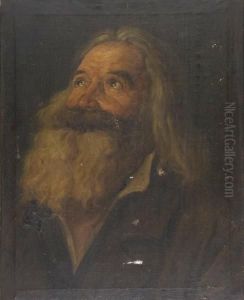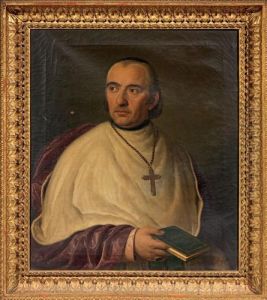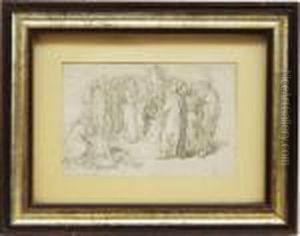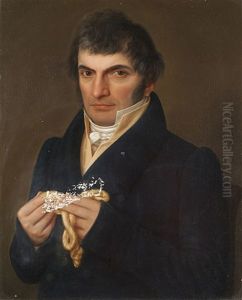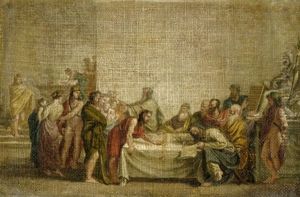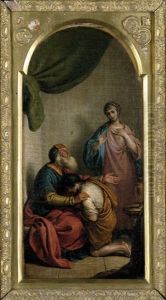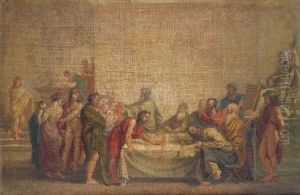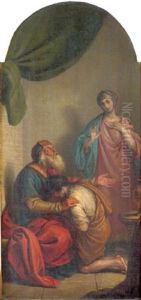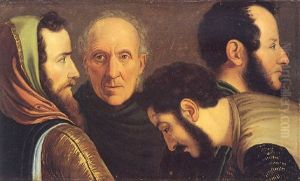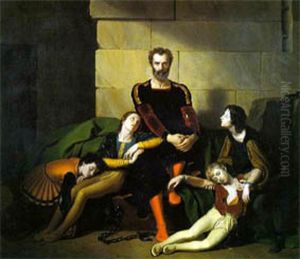Giuseppe Diotti Paintings
Giuseppe Diotti was an Italian painter born on October 13, 1779, in Casalmaggiore, a small town in the region of Lombardy. He was active during the Neoclassical period, which was characterized by a renewed interest in the art and culture of ancient Greece and Rome. This movement sought to capture the ideals of classical beauty, harmony, and proportion in the arts.
Diotti showed early promise as an artist and was sent to study in Parma under Giuseppe Baldrighi. He then moved to Milan, where he became a pupil of the painter and art historian Giuseppe Bossi. Under Bossi's guidance, Diotti honed his skills and developed a style that blended the clarity and precision of Neoclassicism with a certain emotional depth, which was sometimes lacking in the works of his peers.
Throughout his career, Diotti received various commissions for religious and historical paintings. His works were appreciated for their narrative clarity and finely modeled figures, which often reflected the influence of the great Renaissance masters. Diotti was not only celebrated as a painter but also as a teacher, and he served as the director of the Academy of Fine Arts in Mantua for many years.
Giuseppe Diotti's contributions to Italian art were significant during his lifetime, and his works can still be found in churches and museums across Italy. His dedication to teaching also helped shape the next generation of Italian artists. He died on March 1, 1846, in Mantua, leaving behind a legacy as both an accomplished artist and an esteemed educator in the Italian Neoclassical tradition.
